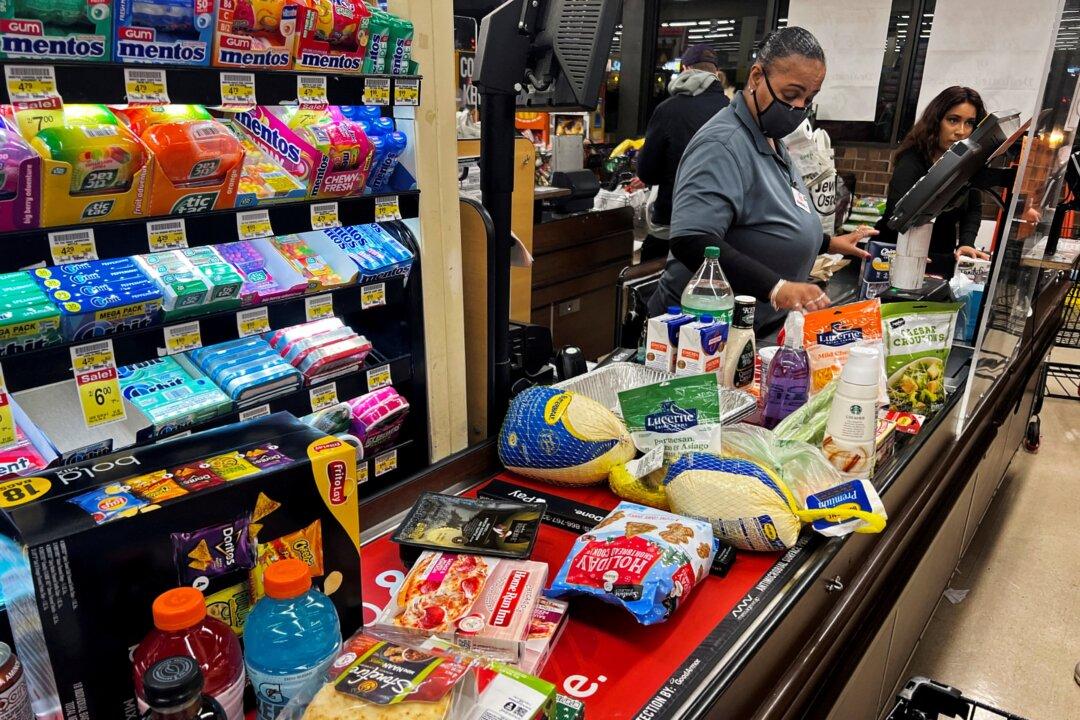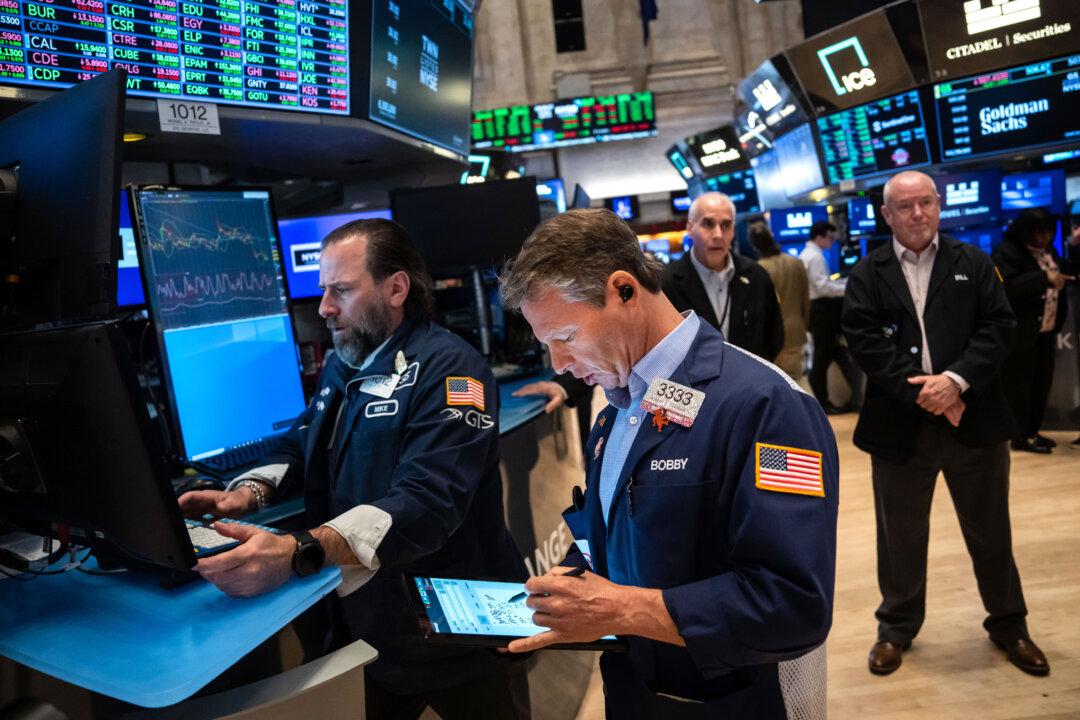The U.S. annual inflation rate surged to 3.4 percent in December 2023 as price pressures continue to be sticky across the marketplace, according to a Bureau of Labor Statistics (BLS) report released on Jan. 11. The latest reading was up from 3.1 percent in November 2023 and topped economists’ expectations of 3.2 percent.
The consumer price index (CPI) rose 0.3 percent on a monthly basis, from 0.1 percent in November; the gain was slightly higher than the consensus estimate of 0.2 percent.
Core inflation, which strips the volatile energy and food components, slowed to 3.9 percent last month, down from 4 percent in the previous month. This also came in higher than the market forecast of 3.8 percent.
The core CPI jumped 0.3 percent, unchanged from the previous month and in line with expectations.
In December, the CPI’s increase was largely driven by increases in the food, shelter, and medical indexes.
Despite widespread expectations that rents would be coming down by now, the shelter index jumped 0.5 percent and is up 6.2 percent year-over-year.
Food prices rose 0.2 percent monthly and are up 2.7 percent from the same time a year ago as meats, poultry, fish, and eggs subindex swelled 0.5 percent from November to December.
Eggs witnessed a revival, soaring 8.9 percent month over month. Farmers are seeing more cases of the bird flu again, weighing on supply as demand remains strong.
Of the meats, ham recorded the biggest increase, soaring 2.6 percent. This was followed by uncooked beef steaks (2.4 percent), pork (0.3 percent), and chicken (0.1 percent).
Elsewhere in the food index, there was a blend of rising prices and deflationary trends.
Coffee, for example, fell 0.8 percent monthly and is down 1.6 percent over the past 12 months. Industry observers warn that this downward direction could be reversed as production levels in key growing areas, such as Brazil and Vietnam, are expected to decline amid weather conditions.
The energy index advanced 0.4 percent, led by a 1.3 percent spike in electricity costs. Gasoline prices also inched higher by 0.2 percent following a 6 percent decline in the previous month.
Apparel rose 0.1 percent, new vehicles picked up 0.3 percent, used cars and trucks edged up 0.5 percent, and medical care commodities slipped 0.1 percent.
But while goods inflation has slowed over the past year—there have been instances of deflation—services have remained elevated.
On the services front, medical care and transportation increased 0.7 percent and 0.1 percent, respectively.
Since August 2023, the services inflation rate has stalled at about 5.2 percent. According to minutes from the Federal Reserve’s December Federal Open Market Committee (FOMC) policy meeting, officials asserted that progress on inflation had been “uneven across components” as prices for core services, which excludes food and energy, are “still increasing at an elevated pace.”
Looking ahead to the January CPI, the Federal Reserve Bank of Cleveland’s Inflation Nowcasting model points to the annual inflation rate coming in at 2.9 percent and the core CPI clocking in at 3.8 percent.
Additionally, the Fed’s preferred personal consumption expenditure (PCE) price index and core PCE are seen easing to 2.3 percent and 2.8 percent year-over-year, respectively.
Greg McBride, chief financial analyst at Bankrate, told The Epoch Times that next month’s inflation reading will have the “usual problem spots” and “a persistent problem child”: shelter and motor vehicle insurance.
“Those are the two big ones month in, month out,” he said. “At what point do we start to see some improvement on that front? So, I think that’s really what everybody’s going to be focusing on.”
Market Reaction
Financial markets were mixed in pre-market trading following the latest inflation data.The U.S. Dollar Index (DXY), a gauge of the greenback against a basket of currencies, erased its losses in early trading.
Treasury yields were up across the board, with the benchmark 10-year yield at around 4.04 percent.
Market analysts warn that the recent numbers could delay rate cuts, giving the “higher-for-longer” crowd an advantage, says Giuseppe Sette, the president of AI-based investment research firm Toggle AI.
“The ‘higher for longer’ party has received one more bullet in its banderole: with CPI marginally higher than expected ... it becomes harder for the Fed to say that inflationary pressures have been tamed, especially in the face of a strong job market,” Mr. Sette said in a note.
“For the entire history of the Fed, rates have always been kept considerably above inflation in any scenario short of a recession. This CPI print pushes the first rate cut further away, possibly not even in 2024.”
With the rate of inflation slowing and the U.S. economy revealing signs of decelerating, investors have been bracing for early rate cuts. The futures market has been pricing in rate cuts for as early as March, although a chorus of economists says June is the more likely time.
Consumers Optimistic About Inflation Trends
Since 2021, cumulative inflation has been around 18 percent, leading to sour opinions about the current economic landscape. After years of crushing inflation, consumers appear to be more optimistic about the future of prices.The New York Fed’s Survey of Consumer Expectations (SCE) showed consumer inflation expectations for the year ahead tumbling for the third consecutive month to 3 percent in December, the lowest reading since December 2021. This was down from 3.4 percent in November.
Three- and five-year horizons slipped to 2.6 percent and 2.5 percent, respectively.
Food and rent inflation expectations dropped by 0.3 percentage points to 5 percent and 0.7 percentage points to 7.3 percent, respectively. Forecasts for home prices, gasoline, and medical care were unchanged. College education costs were seen rising 0.5 percentage points to 6.3 percent.
Household finances are also improving, the regional central bank’s data show. Fewer respondents stated that their households’ current financial conditions were worse off than they were a year ago or in the year ahead.
Soft Landing
The current administration thinks that the U.S. economy has achieved the much-desired soft landing, a scenario where inflation is lower, and the labor market is intact without sliding into a recession.“What we’re seeing now I think we can describe as a soft landing, and my hope is that it will continue,” Treasury Secretary Janet Yellen told CNN following the December jobs report on Jan. 5. “The path the labor market and economy and inflation have followed suggests they’ve [the Fed] made a set of good decisions.”
It remains to be seen if these numbers will translate to better polling data for President Joe Biden heading into the 2024 election. As per the RealClearPolitics polling average, the president’s economic approval rating has been stuck at around the 30 percent mark.







